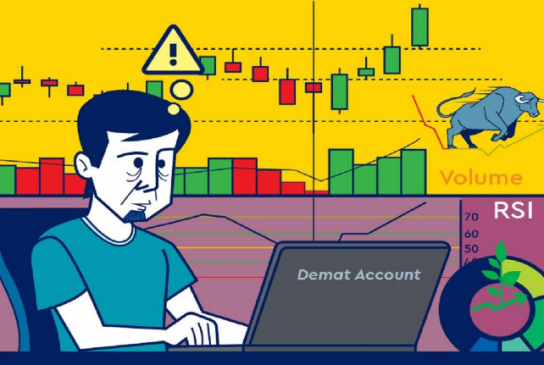You may have heard about demat (Dematerialised) accounts, which is a must for owning shares and other securities such as exchange traded funds (ETFs). But you will do well to remember that you have to open a trading account alongside a demat account to be able to seamlessly buy and sell shares on the stock markets as well as transact in other forms of securities. Though they are two different accounts with unique functions, the two are interdependent.
Read More: What happens to your property if you die without a will?
Functionalities of demat and trading accounts
A demat account just converts your shares from a physical form to an electronic format. To put it simply, a demat account is like your bank locker. You can hold your shares, bonds, debentures, mutual funds, exchange traded funds and other securities in your demat account.
But just like your bank locker cannot work independently from your bank account, demat accounts can operate only in tandem with trading accounts. All demat accounts have a unique number just like bank accounts. But unlike bank lockers where you store your valuables, you can keep your demat accounts absolutely empty. You can open a demat account with zero or nil balance and it can be empty with no shares in it.
Read More: How To Check If Aadhaar Is Linked To PAN Card? Check Steps
Trading account, as the name suggests, is used to buy and sell shares in the stock markets and transact in other forms of securities. Just like the demat account, a trading account also has a unique number.
Both the demat and trading account can be operated online. But it is advisable to have both the accounts with the same DP (Depository Participant) as you would be able to trade seamlessly in such a case. Online access has made stock trading a simple exercise.
How do they work?
Since the demat account will only hold your securities and cannot be used for transactions, its usage will be negated if you do not have a trading account. You should first have a trading account to buy and sell securities and a demat account to hold them until redemption.
The two accounts work closely. For example, say, you want to purchase 100 shares of ABC Company. You have to first place the order for the same in your trading account with the DP. The DP will then make the purchase on your behalf if a seller is found at the price at which you are willing to buy the shares of ABC Company through the stock exchanges.
The transaction is done through the trading account. If it is successful, the details will be sent to the clearing house, which will then debit the shares from the seller’s demat account to your demat account. Once the shares are successfully credited to your demat account, you will be notified about the same. The process is the same for selling shares with the only difference being the nature of the transaction.
Do also remember that you need a demat account if you wish to subscribe to the shares of an IPO (Initial Public Offering) of a company. The securities in a demat account can also be used as a collateral for availing loans.



































